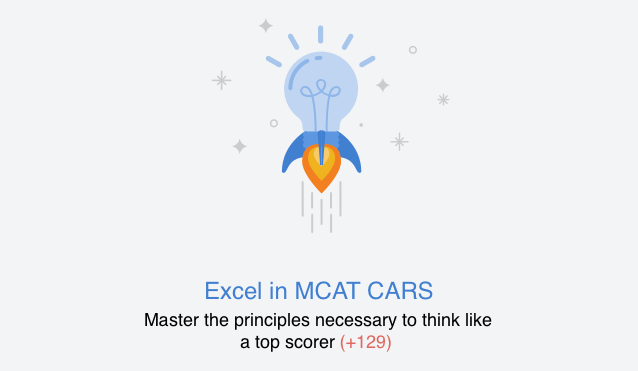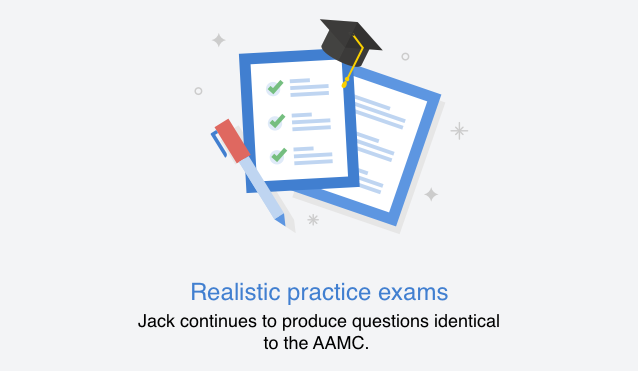Medical School Acceptance Rates: A 2025 Update
In the constantly evolving realm of medical education, where each academic year yields fresh insights and data, it’s imperative for prospective medical students to remain well-informed about the most recent trends and statistics. As we enter 2025, this article provides an updated examination of medical school acceptance rates in the United States. Through a thorough investigation of the factors that impact these rates and a spotlight on significant changes, we aim to equip aspiring medical professionals with a comprehensive understanding of the current admissions landscape. Whether you’re a pre-med student starting your journey or a seasoned applicant seeking insights into the ever-changing field of medical admissions, read on to explore the latest trends and statistics shaping medical school acceptance rates in 2024 and 2025.

Understanding Medical School Acceptance Rates
Medical school acceptance rate refers to the percentage of applicants who are offered admission to a medical school out of the total number of applicants in a given admissions cycle. Acceptance rates can vary widely among medical schools and are influenced by several factors. Here’s a breakdown of how acceptance rates can vary and why they are crucial for medical school applicants:
- Overall vs. Institution-Level Rates: Nationally, just under half of all med school applicants are accepted to at least one program. For instance, in the 2023–2024 cycle about 44% of MD applicants matriculated into a medical school (up from ~41% in 2014–2015), and roughly 42% of DO applicants were accepted. However, the acceptance rate at any individual school is much lower – on average, U.S. allopathic (MD) medical schools accept only about 4–5% of their applicants. In fact, according to recent data, six MD programs had acceptance rates under 1%, while only 18 programs had acceptance rates over 7%. This means that most applicants apply to multiple schools to secure a spot, and even relatively “high” acceptance rates at a school may still be in the single digits.
- Competitiveness of the School: Highly prestigious and competitive medical schools tend to have lower acceptance rates because they receive a large number of applications for few seats. For example, top research institutions like Mayo Clinic and Stanford have acceptance rates around 2%. By contrast, less prominent or regionally focused schools might have slightly higher acceptance percentages.
- Location and State Residency: Medical schools funded by state governments often give preference to in-state applicants. Schools in states with a shortage of healthcare professionals may prioritize applicants from that region, affecting their acceptance rates. For instance, the University of North Dakota’s medical school has an in-state acceptance rate near 18%, and the University of Nebraska accepts more than 40% of its in-state applicants but because these schools receive many out-of-state applications (with very few out-of-state acceptances), their overall acceptance rates appear much lower. In general, public medical schools have much higher acceptance rates for residents of their own state compared to out-of-state applicants.
- Mission and Focus: Some medical schools have specific missions or training focuses (rural medicine, primary care, military service, etc.). These schools may attract a self-selecting applicant pool and have unique acceptance rate patterns. For example, schools emphasizing primary care in underserved areas might favor applicants with those interests, sometimes resulting in higher acceptance rates for that niche. The Uniformed Services University of the Health Sciences (USUHS), which trains military physicians, has an atypically high overall acceptance rate of about 8% (reflecting a specialized applicant pool and service commitment).
- Applicant Pool Size and Quality: Acceptance rates are influenced by the size and strength of the applicant pool. An increase in applications without an increase in class size will drive acceptance rates down. Conversely, a recent decline in applications after the COVID-19 surge has led to slightly higher acceptance percentages at some schools. The quality of applicants matters too if more highly qualified students apply, a school can remain extremely selective even if application numbers drop.
- Admissions Policies: Each medical school sets its own admissions criteria and policies, which can impact acceptance rates. Factors like GPA and MCAT thresholds, interview policies, and whether the school uses rolling admissions or a holistic review process will influence how many applicants are offered admission. Many schools have moved toward holistic admissions, considering factors beyond GPA/MCAT (such as experiences, attributes, and interviews), which means every aspect of an application can make a difference in a competitive year.
Understanding these variations is crucial for applicants. Medical school acceptance rates serve as one indicator of a program’s selectivity, helping prospective students gauge the competitiveness of different schools. However, keep in mind that an acceptance rate is only a number – what really matters is the strength of your own application relative to a given school’s pool and priorities.
Importance of Acceptance Rates for Medical Students
Why should prospective medical students pay attention to acceptance rates? Here are several reasons:
- Competitiveness Assessment: Acceptance rates help applicants gauge how selective a medical school is. A lower acceptance rate indicates a more competitive school. For example, an institution with a 3% acceptance rate will be a reach for almost everyone, whereas a school with a 10% rate (considered high in the med school world) might be more attainable. Knowing this, you can realistically assess your chances. (Keep in mind that even the “easiest” U.S. MD programs still reject around 90–95% of their applicants!)
- Strategic School List: Understanding acceptance rates allows applicants to strategically select a range of schools that align with their qualifications. It’s often recommended to apply to a mix of “reach,” “match,” and “safety” schools. For instance, if your academic metrics and experiences are average, applying only to schools with <5% acceptance rates is risky – you’d want to include some programs with more moderate selectivity. Use acceptance rate data alongside other factors (like median MCAT/GPA of accepted students) to categorize schools in your application list.
- Resource Allocation: Applying to medical school is time-consuming and expensive. Knowing that overall only about 40-45% of applicants are accepted each cycle can help you prepare mentally and financially. By focusing on schools where you have a reasonable chance (e.g. where your stats are near or above their median and whose acceptance rate isn’t extremely low), you can allocate effort and money more efficiently. For example, if you are a state resident, applying to all your in-state schools (which often have higher acceptance rates for residents) should be a priority.
- Decision Making: For those fortunate to receive multiple acceptances, knowing the selectivity and other qualities of each school can inform the decision of where to attend. Acceptance rate may indirectly reflect factors like class size and resources. That said, it shouldn’t be the sole deciding factor – the program’s fit and your career goals matter more once you have an acceptance in hand.
- Planning for Reapplication: If you are not accepted in a given cycle, understanding the landscape can guide your next steps. Was it just a particularly tough year? (For example, the 2021–2022 cycle saw a record surge in applicants and one of the lowest acceptance rates in recent history.) Or do you need to improve your MCAT, GPA, or experiences to be competitive? Knowing that acceptance rates are low even for strong candidates can help set realistic expectations and resilience – reapplicants are common in medicine, and improvement and persistence are often part of the process.
- Setting Realistic Expectations: Ultimately, acceptance rates can help you stay grounded. Even an exemplary student needs to recognize that no one is guaranteed admission to any specific medical school. By acknowledging how selective the process is, you can manage stress and anxiety better, focus on putting forth the best application possible, and avoid taking rejection personally. An offer of admission is a tremendous accomplishment given that less than half of applicants nationwide make it in each year, so be proud of your hard work regardless of the outcome.
Influence of GPA, MCAT, and Extracurriculars on Acceptance Rates
Your individual qualifications – particularly your GPA, MCAT score, and extracurricular experiences – have a profound impact on your chances of admission. Admissions committees consider these factors when evaluating applicants, and they play a crucial role in determining whether you receive an offer. Here’s how each of these elements can influence acceptance:
- GPA (Grade Point Average): Your undergraduate GPA (both overall and science GPA) is one of the strongest predictors for admissions committees. A high GPA demonstrates consistent academic excellence and the ability to handle challenging coursework. Medical schools generally prefer applicants with strong academics – the average GPA of accepted students is around 3.7-3.8 (on a 4.0 scale) at many schools[18][19]. If your GPA is significantly above a school’s average, you’ll have a competitive edge and a higher chance of acceptance. Conversely, if your GPA is below the typical range, it can greatly reduce your chances unless you compensate elsewhere. Some schools have minimum GPA cutoffs; falling below those thresholds might result in an automatic rejection. That said, holistic review can provide some leeway – an applicant with a lower GPA could still be accepted if they show an upward trend in grades or exceptional qualities in other areas. Key point: a strong GPA won’t guarantee admission, but a very low GPA almost guarantees rejection (barring extraordinary circumstances). Aim to excel academically in college, especially in science courses, to keep as many doors open as possible.
- MCAT Scores: The MCAT (Medical College Admission Test) is the standardized exam for med school applicants, and its importance cannot be overstated. A high MCAT score can significantly boost your chances of acceptance. Admissions committees use the MCAT as a common measure to compare students from different schools and backgrounds. For reference, the median MCAT for students entering MD programs is around 511-512 nationally, and top programs often have medians in the 517+ range[20][21]. Scoring well above a particular school’s median can make you a very attractive candidate there. In cases where an applicant’s GPA is on the lower side, an outstanding MCAT can help balance the application and demonstrate academic capability[8]. However, similar to GPA, some schools use MCAT cutoffs; a score below, say, 500 will severely limit MD options (DO schools might be a bit more forgiving). It’s also worth noting that while a high MCAT is helpful, it’s not everything – many 520+ MCAT scorers still get rejected from multiple schools because other aspects of their application fall short. Essentially, think of GPA and MCAT as foundational – they often determine whether you get considered seriously. Once you’re above a school’s academic thresholds, additional points on the MCAT or decimal points of GPA yield diminishing returns compared to other factors.
- Extracurricular Activities and Experiences: Beyond the numbers, what you have done matters a lot. In fact, at schools using holistic review, strong extracurriculars can make the difference between acceptance and rejection among academically similar candidates. These activities include clinical experience (e.g. volunteering or working as a scribe, EMT, medical assistant), research projects, community service, leadership roles, and unique endeavors (like starting an organization or achieving something notable in another field). A robust record of medically-relevant experiences shows your commitment to the field and helps convince schools that you know what you’re getting into. For example, having hundreds of hours volunteering in a hospital or clinic, or participating in patient care, demonstrates you’ve tested your motivation for medicine. Research experience is valued, especially at research-intensive schools, and can lead to publications or presentations that strengthen your application. Leadership and service activities (such as leading a club, tutoring, mission trips, etc.) highlight your soft skills and altruism. Strong extracurricular involvement can make an applicant stand out and sometimes compensate for slightly lower stats. Many admissions committees do a “holistic” evaluation where they ask: What has this person done? What will they bring to our class? An applicant with average academics but extraordinary experiences (say, ran a free clinic abroad, or was a Gold Medal athlete, or has extensive healthcare work in underserved communities) may be very appealing and boost their chance of acceptance. Importantly, extracurriculars should align with the school’s mission when possible – for instance, if a school emphasizes primary care in rural areas and you’ve interned in rural health clinics, that’s a great fit and could tilt an acceptance in your favor.
In summary, GPA and MCAT are often used as initial screening tools – you typically need to be within a competitive range to get to the next stage (the interview). Once you’re in that range, extracurriculars, personal statements, and letters of recommendation become crucial decision factors. Medical schools seek students who are not only smart but also well-rounded, resilient, and passionate about medicine. Every applicant should strive to maintain a strong GPA, prepare thoroughly for the MCAT, and engage deeply in extracurricular experiences that demonstrate their commitment and suitability for a career in medicine.
Updated list of 20 US Medical Schools with Highest Acceptance Rates (2024)
Conclusion
As we conclude our exploration of medical school acceptance rates heading into 2025, it’s clear that the journey to becoming a physician remains highly competitive and dynamic. We’ve seen that overall acceptance rates have slightly improved in recent years (with about 44–45% of applicants matriculating somewhere in the latest cycle), largely due to fluctuations in application volume and incremental growth in medical school spots. However, gaining admission to any particular school is still an uphill battle – the average acceptance rate per school is around 5%, and many schools accept only a tiny fraction of those who apply. This underscores the importance of a strategic and well-prepared approach to the application process.
Key takeaways for prospective applicants include the need for a well-rounded and strong application: a solid academic record (GPA and MCAT), substantial and meaningful extracurricular experiences, and the ability to tell one’s story through personal statements and interviews. Admissions trends such as holistic evaluation mean that qualities like resilience, empathy, and commitment to service are more important than ever – and applicants should find ways to convey those attributes. At the same time, data-driven insights (like acceptance rates, average scores, etc.) can be useful for planning, but they should not dictate one’s dreams. If anything, the statistics we’ve discussed should motivate you to put forth your best effort and to apply wisely and broadly.
You can always contact Jack Westin’s team of academic consultants for more tailor-made advice during your MCAT prep journey. Make sure to check out our website for affordable MCAT online courses, tutoring options, free weekly sessions, practice questions, and more!










